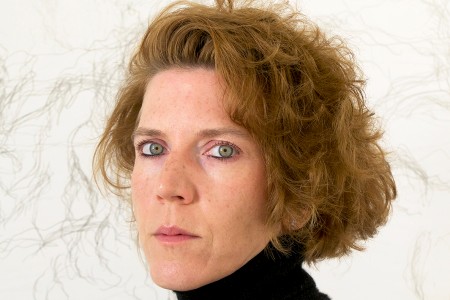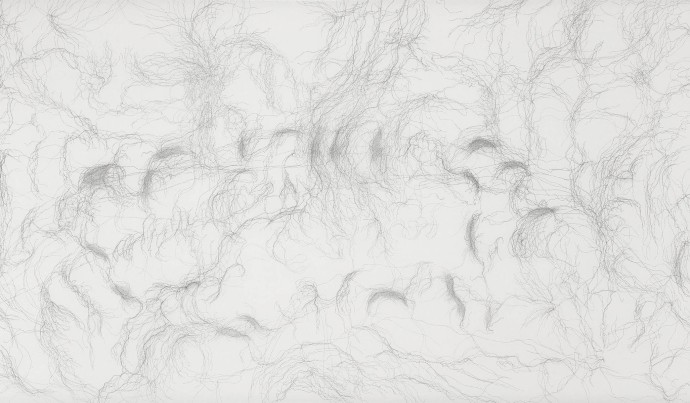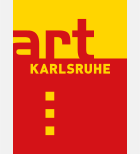Hans Platschek Prize
The Hans Platschek Foundation, which the attorney Kurt Groenewold founded in Hamburg in 2005, which has annually conferred its art prize at art KARLSRUHE for more than a decade, commemorates the painter and author Hans Platschek, who passed away in the year 2000 and surely ranked among the foremost pioneering and reflective thinkers and critics of artistic positions after the Second World War.
The Berlin-born artist last resided in Hamburg after having lived in cosmopolitan cities such as London, Paris and Rome. He fled to South America with his parents as a teenager because daily life under the National Socialist regime in Germany had become unbearable for the family (his mother was Jewish).
The award ceremony will take place at the upcoming art KARLSRUHE on Thursday, 22 February 2024, 4 pm in the ARTIMA art Forum in Hall 2. The laudatory speech will be held by Dr Marion Ackermann, Director General of the Dresden State Art Collections. The artist Paula Doepfner will be present.
Prize winner 2023: Paula Doepfner

Marion Ackermann, General Director of the Dresden State Art Collections, attests to the "impressive topicality" of the text drawings by Paula Doepfner, born in 1980 and based in Berlin. The artist was a master student of Rebecca Horn at the Berlin University of the Arts and deals with crises and wars, including Auschwitz dramas. She is therefore regarded as an existentially orientated draughtswoman. She follows in the literary footsteps of writers such as Paul Celan and Robert Musil.
Marion Ackermann was invited by the award organiser - the Hans Platschek Foundation in Hamburg -bto nominate a personality for the 2024 prize as a solo juror. Paula Doepfner's work, which often consists of spoken word and visual art, establishes a congenial relationship with Hans Platschek.
Paula Doepfner is currently represented with an exhibition, "Darkness at the break of noon", at the Residenzschloss of the Dresden State Art Collections until 28 January 2024. During art KARLSRUHE 2024, she will engage in a dialogue with works by Hans Platschek in Hall 3 of the fair. The prizewinner, who frequently observes autopsies and makes sketches at the Charité hospital in Berlin, will impressively document for the general public that art is much more than just creating beautiful pictures. In the spirit of Hans Platschek.
List of works Paula Doepfner

Paula Doepfner, "I got nothing, Ma, to live up to", text: "Vergiss Deinen Namen nicht - Die Kinder von Auschwitz" by Alwin Meyer, ink on Gampi paper, 101 x 180 cm, 2022 - 2023. photo: Mathias Schormann
Hans Platschek: Role Model
There can be no doubt that Hans Platschek, who was born in Berlin in 1923 and died in Hamburg in 2000, numbers among the artists who strongly influenced the art after 1945 in Germany. Like many of his colleagues, he initially developed a nonfigurative style of painting, often restricted to dark, earthy tones. Afterwards, but already before the end of the 1950s, he broke out of Informalism and increasingly dedicated himself to a figurative way of painting. Some of his artist friends denounced this as treasonous disloyalty. For his part, Hans Platschek – who also provided plenty of explosive material in his books (e.g. “Über die Dummheit in der Malerei” [“The Stupidity of the Painting”] or “Von Dada zur Smart Art” [“From Dada to Smart Art”]) and articles – was one of the pioneering thinkers who never avoided a conflict and whose thought-provoking opinions always sparked lively debates.
The Interview
Karlheinz Schmid, author and publisher of KUNSTZEITUNG, talks about Hans Platschek.
Karlheinz Schmid: He had the rare gift of being able to combine high intellectuality and the most hedonic sensuality. His personality was dominated by these two forces. On the other hand, they also provided him with two escape valves through which he brought his thoughts and feelings into public view. Hans Platschek painted what he either could not or preferred not to describe in words. And he repeatedly wrote texts whenever his visual media threatened to fail and his thoughts stretched far beyond the limits of a picture frame. He utilized this interplay with characteristic virtuosity until his final hour.
Karlheinz Schmid: Naturally, Platschek was sufficiently smart and experienced enough to also be capable of working academically. But alongside his paintings on canvas or paper, he clearly preferred the opportunity to also be colourful with words. He was a man of letters and always dedicated to art, which was his lifelong theme. He also had no qualms about ruthlessly fouling the nest and launching personal attacks against individual colleagues when he was not convinced by their message. He was a polemicist of a breed rarely seen in the art business in the past decades.
Karlheinz Schmid: Joseph Beuys was his archenemy. I shall never forget the nightlong arguments we had about Beuys during the first half of the 1980s, before the untimely death of that ubiquitously courted artist. Fortunately, our disputes always ended in reconciliation! Some laymen claimed that Beuys was a charlatan. Hans Platschek strove to disseminate that view in an even more extreme form, which he naturally supported with ample and eloquent argumentation. I often thought Hans was only trying to impress the boys and girls “on the turf” in Hamburg. But soon afterwards I would find myself reading precisely the same words that he had declaimed a few nights previously. It was a wild time, a time when art seemed to be a matter of life and death, all or nothing.
Karlheinz Schmid: I miss my fatherly friend, who was a great artist. I am glad that Hamburg’s Hans Platschek Foundation annually commemorates him at art KARLSRUHE with a prize conferral and an exhibit which confirm that this painter and critic left an oeuvre which still deserves to be grappled with.
Previous winners
- 2023 Cornelia Schleime, painter | Juror: Dr. Thomas Köhler, Director of the Berlinische Galerie
- 2022 Osmar Osten, painter | Juror: Ulrike Lorenz, President of Klassik Stiftung Weimar
- 2021 Monika Baer, painter | Juror: Christina Végh, Director of Kunsthalle Bielefeld
- 2020 Helga Schmidhuber, painter | Juror: Prof. Dr. Alexander Klar, director of the Kunsthalle Hamburg.
- 2019 Monica Bonvicini, painter and performance artist | Juror: Prof. Bettina Steinbrügge, art historian
- 2018 Michael Kunze,painter | Juror: Dr. Gregor Jansen, art historian, publicist and curator
- 2017 Jonathan Meese, painter and performance artist. | Juror: Florian Illies, art historian and art critic
- 2016 Justin Almquist, US Amercan artist. | Juror: Matthias Mühling, director of Städtische Galerie im Lenbachhaus
- 2015 Rikuo Ueda, Japanese artist from Osaka. | Juror: Sebastian Giesen, art historian
- 2014 Sandra Boeschenstein, Swiss artist, lives and works in Zürich. | Juror: Ulrike Groos, director of Kunstmuseum Stuttgart
- 2013 GIOM (Guillaume Bruère), French draughtsman, painter, sculptor and performance artist. | Juror: Robert Fleck, Kunstakademie Düsseldorf
- 2012 Rolf Bier, painter, author and object artist. | Juror: Ulrich Krempel, director of Sprengel Museum Hannover
- 2011 Werner Büttner, publishes visual works and aphoristic texts. | Juror: Harald Falckenberg, art collector
- 2010 Monika Grzymala, sketches and paper installations. | Juror: Axel Hecht, art critic and editor-in-chief of “art” magazine for many years
- 2009 Friedrich Einhoff, painter and draughtsman. | Juror: Werner Hofmann, former director of Kunsthalle in Hamburg
- 2008 F. W. Bernstein, draugtsman and satirical author. | Juror: Manfred Eichel, former head of “aspekte”

